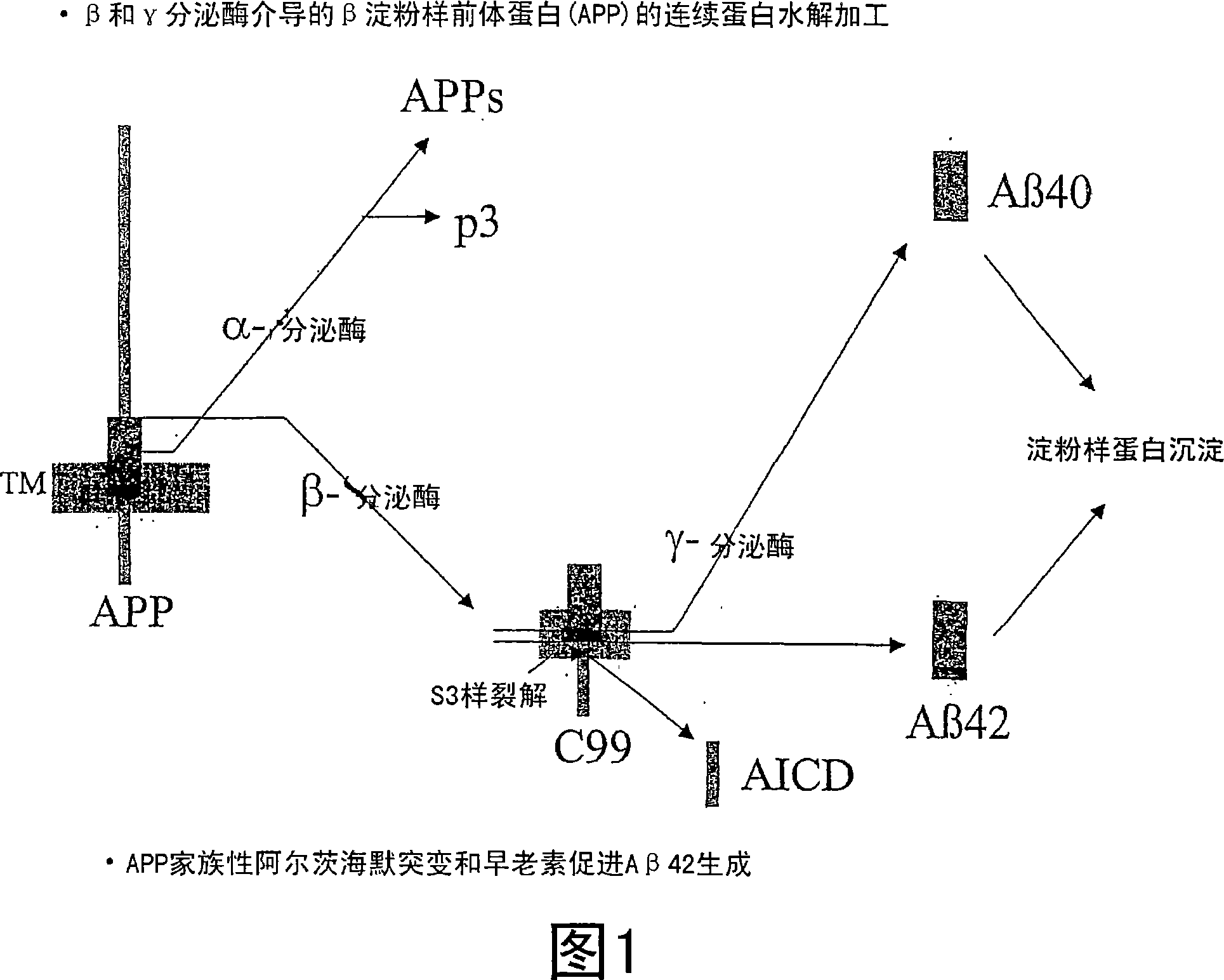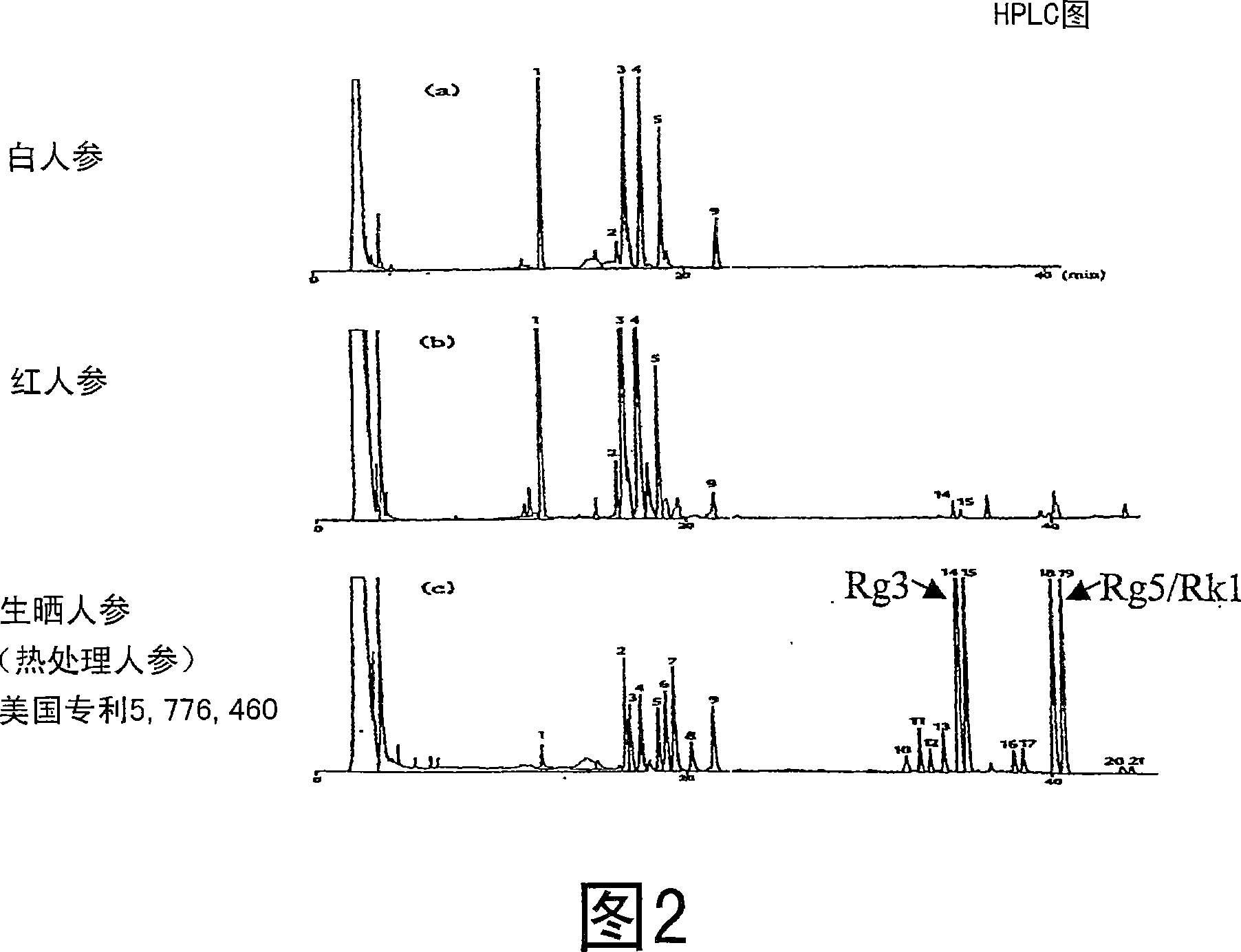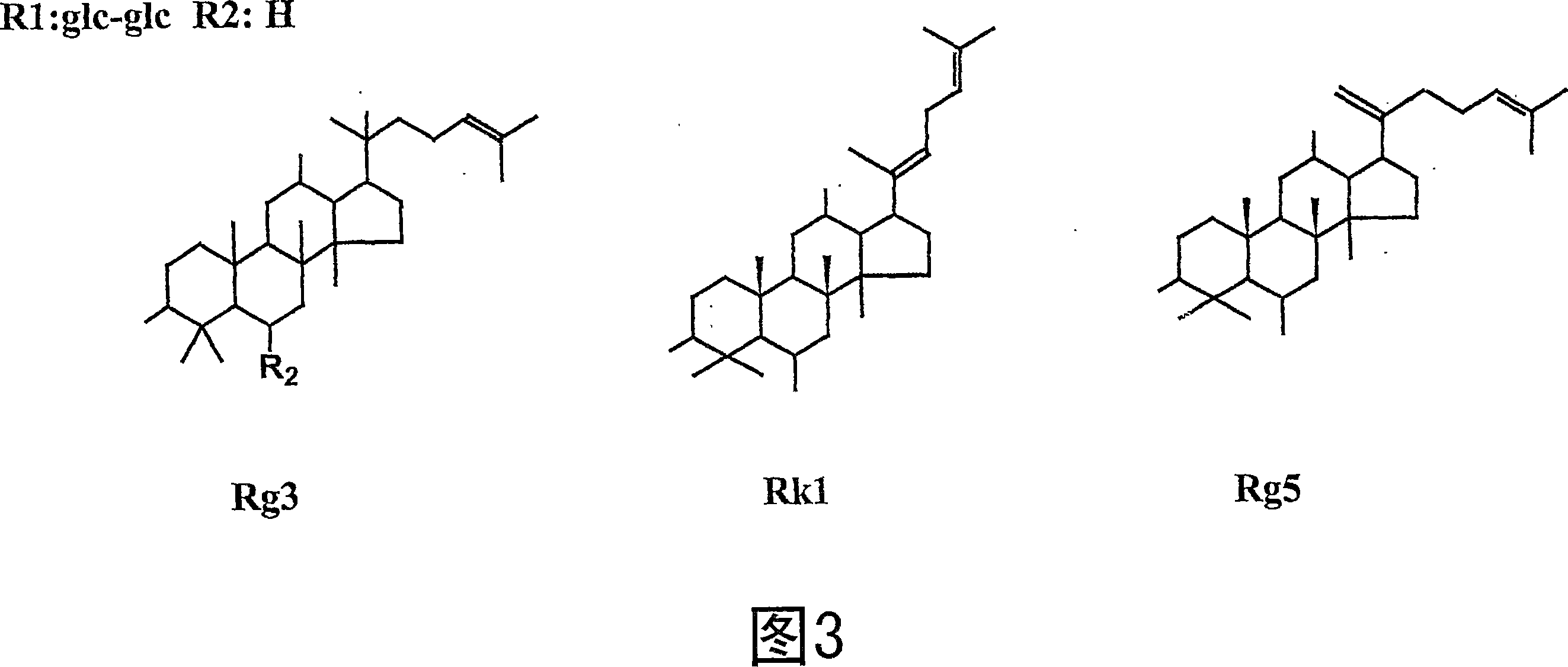Compounds for treating alzheimer's disease and for inhibiting beta-amyloid peptitde production
A technology for Alzheimer's and amyloid, which is applied in the field of compounds used to treat Alzheimer's disease and inhibit the production of amyloid beta peptide, and can solve problems such as side effects
- Summary
- Abstract
- Description
- Claims
- Application Information
AI Technical Summary
Problems solved by technology
Method used
Image
Examples
Embodiment 1
[0092] To detect the possible role of ginsenosides and their analogues in the treatment of AD. First, various ginsenosides were screened based on their effects on Aβ production. Chinese hamster ovary (CHO) cells expressing human APP (CHO-APP cells) were cultured with each ginsenoside purified from untreated ginseng (called white ginseng), and the effects of various ginsenosides on Aβ ( Such as the impact of Aβ40 and Aβ42) generation. These representative ginsenosides include Rb1, Rb2, Rc, Rd, Re, Re, Rg1 and Rg2, which differ in their side chains and sugar groups.
[0093]Tables 1-3 Structures of ginsenosides used in the studies and their effects on Aβ42 production. They differ by two or three side chains attached to a common triterpene backbone called dammaranes. The common structural skeleton of each group of ginsenosides is shown in the upper figure. Ginsenosides with Aβ42-lowering activity are indicated in the rightmost column of the table: reduced Aβ42 activity ("Yes"...
Embodiment 2
[0109] The therapeutic benefit of ginsenosides for the treatment of AD-associated neurodegeneration can be demonstrated in murine AD models. Specifically, ginsenoside compounds (20S) Rg3, Rk1, Rg5, and Rgk351 can be used to treat mice with AD-related neurodegeneration.
[0110] Mice expressing human APP as well as mice expressing the Swedish familial AD mutant form of APP were obtained from Jackson Laboratory, 600 Main Street, Bar Harbor, Maine 04609. Four groups of mice can then be studied: (1) APP mice, not treated with ginsenoside (placebo); (2) Swedish mice, not treated with ginsenoside (placebo); (3) APP mice+Rg5 (100 μg / μl / day); and (4) Swedish mice+Rg5 (100 μg / μl / day). After approximately 16 weeks of injection treatment, the amount of A[beta]42 in the serum of the mice was determined. The results of this study are expected to demonstrate the general benefit of ginsenoside treatment for the treatment of AD-related neurodegeneration. Compared with APP mice and Swedish...
PUM
 Login to View More
Login to View More Abstract
Description
Claims
Application Information
 Login to View More
Login to View More - R&D
- Intellectual Property
- Life Sciences
- Materials
- Tech Scout
- Unparalleled Data Quality
- Higher Quality Content
- 60% Fewer Hallucinations
Browse by: Latest US Patents, China's latest patents, Technical Efficacy Thesaurus, Application Domain, Technology Topic, Popular Technical Reports.
© 2025 PatSnap. All rights reserved.Legal|Privacy policy|Modern Slavery Act Transparency Statement|Sitemap|About US| Contact US: help@patsnap.com



